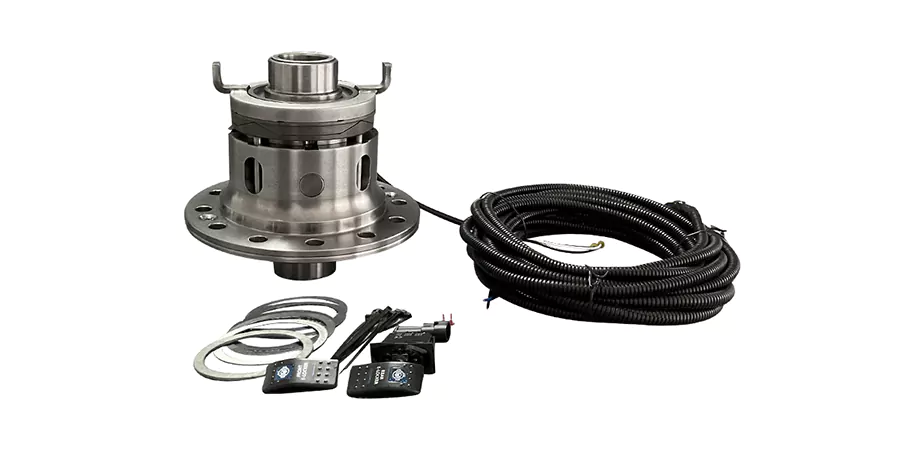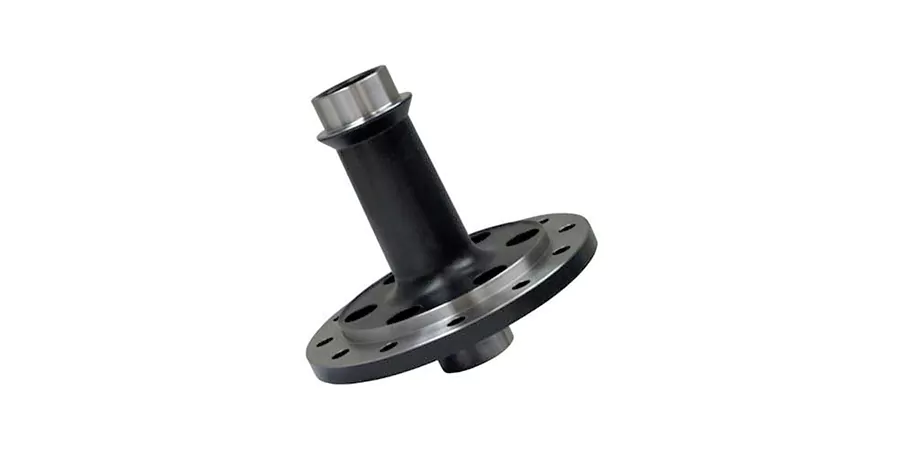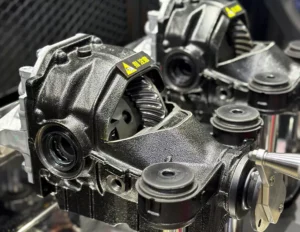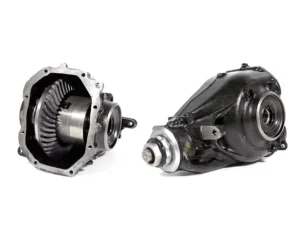When off-roading, traction is undoubtedly the most important factor. While ground clearance, grippy tires, and adequate articulation are all aspects of a good wheeled vehicle, they are useless if you can’t get the power to the ground.
This is where locking differential, or “diff lockers,” come into play. Designed for maximum traction, these off-road/racing-centric differentials “lock” the two wheels of an axle together to ensure 100% of the torque applied by the vehicle is transferred to the ground.
How Does a Locking Differential Work?
In a non-locking differential, the pinion gear rotates the ring gear. The ring gear can only rotate the half shaft indirectly through the carrier. As the ring gear rotates, torque can be transferred to either half shaft through a set of spider gears and side gears. The spider gears and side gears can rotate with each other like a planetary gear set.
In a locking differential, these spider gears and side gears are held together by a set of clutches. These clutches hold the two half shafts together, allowing both wheels to rotate evenly. These clutches are designed to slip so that the vehicle can turn. When turning, the inside tire always turns slower. The spider gears and side gears will now allow the inside wheel to rotate slower like a non-locking differential.
Locking Differential Types
There are several different types of locking differentials; let’s look at the three most common: selectable, automatic, and spool differentials.
Selectable

Selectable locking differentials allow the operator to manually select when to use an electrically or pneumatically assisted locking differential. With an electric locker, magnets inside the differential attract a series of bearings or pins to connect the two axles. Pneumatic lockers, on the other hand, use high-pressure air fed into the differential by an onboard air compressor to engage an internal clutch gear, locking the cross-axle and side gears together.
Automatic

Automatic lockers (mechanical) are even simpler and automatically engage when necessary. During a low-traction event, the detected RPM change is greater than the locker’s preset threshold, and the automatic locker will tie the vehicle’s axles together to maintain traction.
On the street, the automatic locker exhibits inferior driving characteristics compared to the selectable locker. While an automatic locker is better than a spool on the street, it can cause tire hop, skipping, and uneven wear.
Spool

While less street-friendly than the first two differential styles, full and mini axles are popular among budget-conscious wheelers due to their low price, simplicity, and traction. Both full and mini axles replace moving parts in the differential; but they replace different parts. Full axles replace the entire carrier, while mini axles fit inside the factory open carrier in place of the spider gear.
With spool and mini spool rear differentials, there is no switch; the two axles are locked together 100% of the time, making street driving less than enjoyable.
Conclusion
In conclusion, locking differentials are essential for off-road enthusiasts looking to maximize traction and overcome challenging terrain. Whether you choose a selectable, automatic, or spool differential, each offers unique benefits depending on your driving needs. Selectable lockers provide control, automatic lockers offer convenience, and spool differentials deliver budget-friendly simplicity. Understanding how each type functions can help you make the best decision for your off-road vehicle, ensuring you get the most out of your adventures while maintaining optimal performance.



